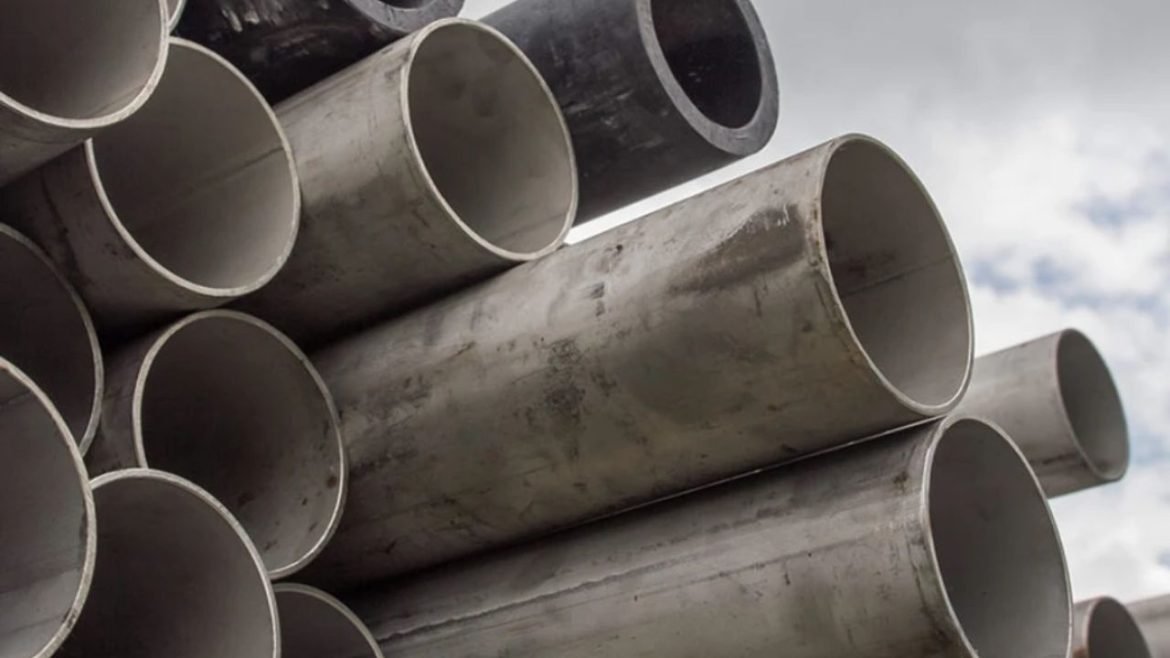Modern engineering relies heavily on steel pipes as essential elements that perform multiple tasks across construction sites and petrochemical facilities. The steel pipe family includes Schedule 40 and Schedule 80 which differ fundamentally through their wall dimensions structural capabilities and intended usage. This article examines how schedule 40 pipe and Schedule 80 steel pipes function in contemporary engineering applications while preserving the engineering project integrity and operational efficiency.
Characteristics
The pressure ratings and wall thicknesses for steel pipes are specified by the terms “Schedule 40” and “Schedule 80.” The American National Standards Institute (ANSI) system through its guidelines establishes dimensions and tolerances for both Schedule 40 and Schedule 80 steel pipes. Schedule 40 steel pipes feature a slight wall thickness that stands in contrast to Schedule 80 steel pipes because their superior longevity results from elevated pressure capabilities. General-purpose applications use Schedule 40 pipes but Schedule 80 pipes, serve demanding applications that need stronger resistance and additional strength. The selection between Schedule 40 and Schedule 80 pipes depends on three main factors: project requirements, necessary pressure levels, and environmental exposure conditions.
Applications of Schedule 40 Steel Pipes
The widespread industrial use of Schedule 40 steel pipes results from their combination of strength properties economic value and simple installation characteristics. These pipes serve low-pressure applications by operating in water supply systems HVAC systems and plumbing infrastructure. Their reduced weight enhances installation efficiency and reduces project costs which makes them perfect for large-scale construction sites. These Schedule 40 pipes commonly find their application in the plumbing industry as well as HVAC systems and beyond agriculture to serve irrigation projects and fire protection systems. These pipes offer a cost-effective solution for standard applications because their reduced thickness does not compromise their operational safety or performance capabilities.
Applications of Schedule 80 Steel Pipes
General engineering applications use Schedule 40 pipes yet Schedule 80 steel pipes serve specialized high-pressure tasks. Schedule 80 pipes bear additional strength due to their increased wall thickness and provide higher pressure-bearing capacity together with impact resistance suitable for demanding fluid-gas flow requirements. Schedule 80 steel pipes serve critical roles in oil and gas operations chemical processing facilities and petrochemical industries because their piping systems need to maintain both safety standards and operational efficiency. Schedule 80 pipes serve applications in heavy-duty irrigation systems industrial equipment and water treatment facilities. The reinforced design of these steel pipes enables their use in environments that subject pipes to damaging temperatures or corrosive substances and harsh chemical exposure. The properties that distinguish Schedule 80 pipes make them essential for industrial operations that need dependable high-strength materials during extended usage.
Fundamental Differences
Schedule 40 and Schedule 80 steel pipes differ mostly through their thickness measurements and their maximum pressure capacity. Schedule 40 pipes maintain their lower pressure ratings because they contain thinner walls which also reduces their overall weight. Schedule 80 pipes demonstrate superior strength through their larger wall thickness which enables them to handle elevated pressures and demanding environmental conditions. Applications using Schedule 40 pipes work well with lower pressure situations such as water delivery systems and heating ventilation air conditioning systems because these pipes have appropriate wall thickness. The oil and gas industry needs Schedule 80 pipes for high-pressure systems because these pipes deliver superior structural strength and durability and better resistance to external forces. Because Schedule 80 pipes need extra material along with additional manufacturing processes the total price exceeds Schedule 40 pipe costs. Standard engineering applications benefit from Schedule 40 pipes because they provide cost efficiency yet Schedule 80 pipes represent a necessary yet expensive solution for demanding industrial requirements.
Selection of Appropriate Pipe
Project requirements determine the selection between Schedule 40 and Schedule 80 steel pipes for any given application. General-purpose applications that operate under moderate pressure conditions benefit from a selection of Schedule 40 pipes that deliver dependable functionality alongside cost efficiencies. The lightweight construction and simple handling characteristics of these pipes make them suitable for residential plumbing systems commercial applications and various industrial needs. Schedule 80 tubes outperform Schedule 40 in more demanding applications because of their specific features for sustaining extreme pressures and resisting impact hits. The dual advantages of stronger walls together with heightened pressure limits give Schedule 80 pipes unmatched safety features thus making them the preferred tube option for petrochemicals along oil and gas along with water treatment industries.
Conclusion
Steel pipe products in Schedule 40 and Schedule 80 formats serve critical functions in contemporary engineering solutions across diverse application requirements. The main difference between these pipe structures emerges through their wall dimensions because they determine serviceable strength when faced with pressure and external loads. Schedule 40 pipes serve general applications but Schedule 80 pipes demonstrate superior performance in demanding high-pressure systems operating in harsh conditions. Engineers choose appropriate piping solutions by analyzing multiple project variables such as pressure standards environmental conditions and financial boundaries. Modern engineering depends on steel pipes of both types to maintain system efficiency and infrastructure safety within the construction manufacturing and energy sectors.
